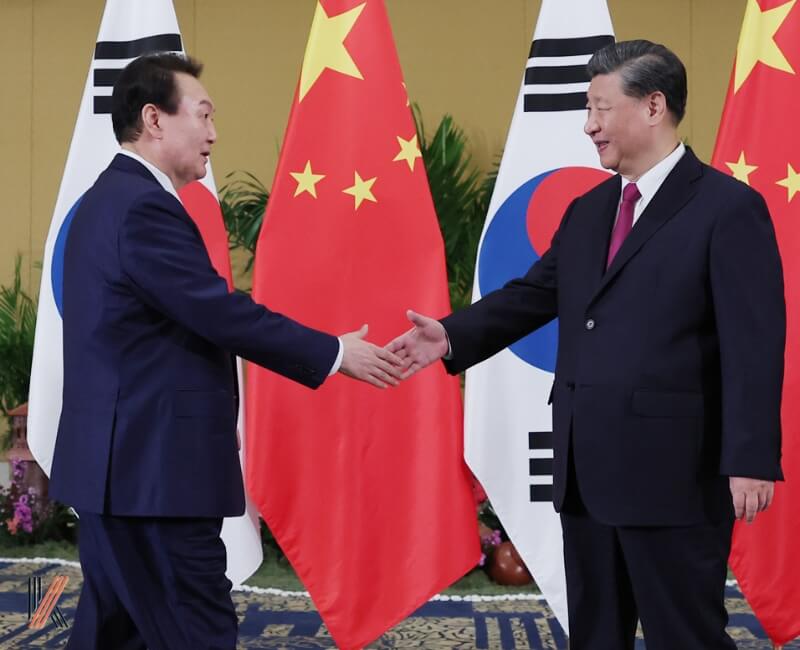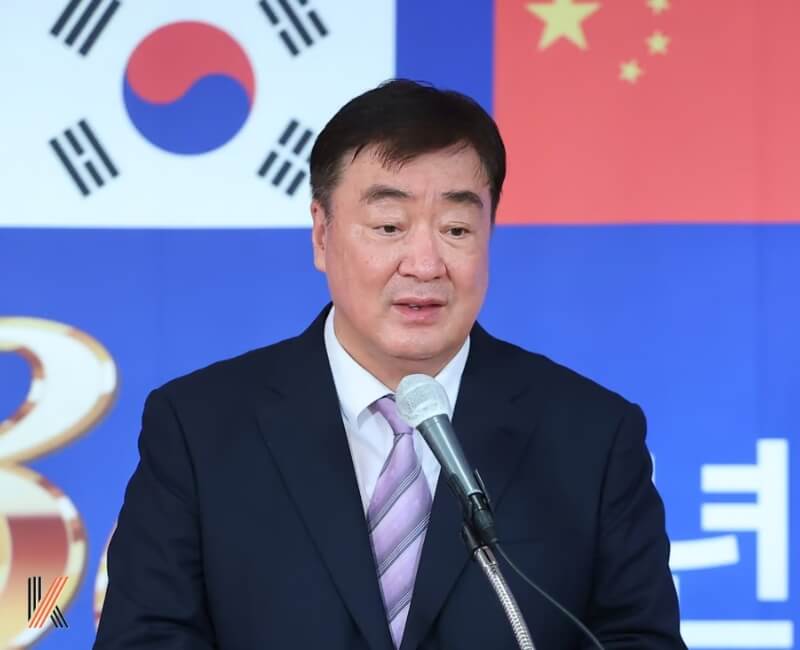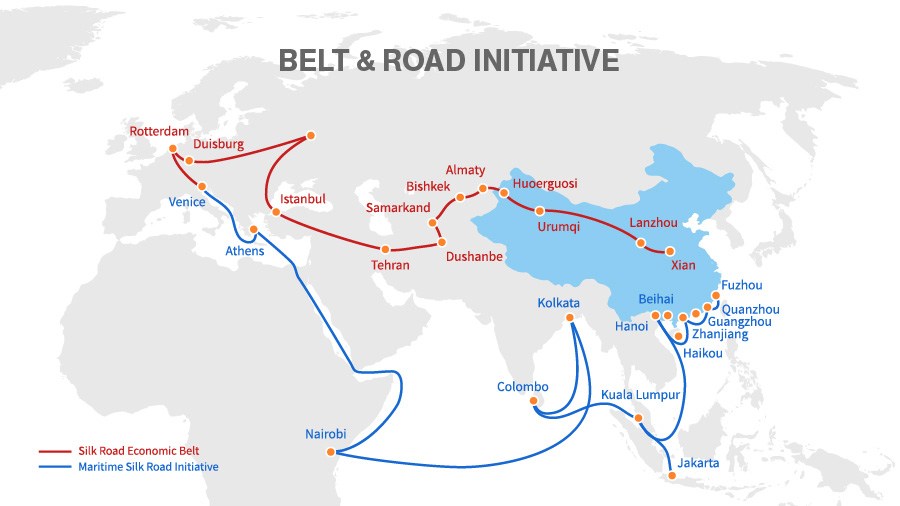Recently, the diplomatic relations between China and South Korea have faced tensions and suspicions. South Korean President Yoon Suk Yeol’s efforts to strengthen ties with NATO, stabilize relations with Japan, and enhance cooperation with the United States have been met with vehement criticism from China. The dispute first escalated when President Yoon described a potential conflict between mainland China and Taiwan as a global security issue, deviating from South Korea’s longstanding policy of accepting China’s view of Taiwan as an internal matter. These developments have strained the relations between the two countries.
The Diplomatic Fallout and Complexities in China-South Korea Relations
China responded firmly, stressing that the Taiwan issue is an internal matter and urging South Korea to adhere to the one-China principle. Both governments engaged in diplomatic demarches, and ambassadors from each country were summoned for discussions. Chinese media outlets, including Global Times, criticized Yoon’s foreign policy outreach and called on China to maintain strategic determination in its relations with South Korea.

The diplomatic relations between China and South Korea, as such, had become more complicated due to the fallout from the US-South Korea summit and China’s response to Yoon’s remarks on Taiwan. China has been dissatisfied with South Korea’s alignment with the United States and Japan, viewing it as detrimental to its security interests and the balance between the US and China. Experts agreed there was a possibility of a prolonged stalemate in relations between China and South Korea. However, there remained a slight chance of reconciliation, as evidenced by the invitation extended to Chinese President Xi Jinping to visit Seoul.
Then despite the possibility of a cessation of diplomatic conflicts, Seoul urged Beijing to address the offensive remarks made by Chinese Ambassador Xing Haiming during a meeting with Democratic Party leader Lee Jae-myung at the Chinese Embassy in Seoul. The Chinese Foreign Ministry dismissed the request, asserting that Xing’s extensive interactions with Koreans from diverse backgrounds were part of his ambassadorial duties and aimed at fostering understanding and cooperation between the two countries.
Strained Relations, THAAD Deployment, and Steps towards Recovery

Certainly, in the past, there have been various points of contention between South Korea and China, including the presence of US forces in Korea and the China-North Korea alliance. One significant event that strained diplomatic relations between China and South Korea was the deployment of the Terminal High Altitude Area Defense (THAAD) system in South Korea. This deployment had significant economic consequences for South Korean industries heavily reliant on Chinese markets, as China retaliated with various measures such as unofficial economic sanctions and restrictions on tourism.
However, both countries recognized the importance of maintaining stable relations and engaged in negotiations and discussions to alleviate tensions. Eventually, in 2017, South Korea and China reached an agreement to restore and normalize their relations. This agreement led to a gradual improvement in the situation and the restoration of some economic cooperation between the two countries.
It’s worth noting that South Korea has expressed concerns regarding China’s role in dealing with North Korea’s nuclear weapons proliferation and provocative actions on the Korean peninsula. South Korea has urged China, as North Korea’s crucial benefactor and lifeline, to take more active measures to address these issues.
All in all, the strained relations between South Korea and China due to the THAAD deployment had undergone a process of recovery and normalization. Still, certain concerns and disagreements remain regarding North Korea’s behavior and China’s role in addressing it.
China’s current diplomatic reactions can be attributed to several factors. Firstly, the United States has recently achieved geostrategic gains in the Pacific region and Vietnam, which has created a sense of unease in China. The US efforts to counter Chinese military expansionism and political influence in the Indo-Pacific have led to the deepening of defense and security ties with APAC countries, thereby forcing regional states to choose sides.
Secondly, there is an ongoing chip war between the US and China, specifically in the realm of microchips. China’s dependence on Korean microchips has made it vulnerable in this conflict. The US has been employing strategic measures to restrict Chinese access to advanced chip technology, which has significantly impacted China’s technology industry.
Overall, China’s diplomatic reactions at this time can be seen as a response to the US’s geostrategic gains, the chip war, and China’s dependence on microchips, which have created challenges and necessitated a more aggressive diplomatic approach to protect its interests.
Factors Influencing China’s Diplomatic Reactions

Meanwhile, China’s ambitious foreign policy initiative, the Belt and Road Initiative (BRI), has indeed faced significant challenges and uncertainties, especially in the wake of the COVID-19 pandemic and China’s economic slowdown. These factors have led to a decline in China’s lending for BRI projects, resulting in diminished support for the initiative and mounting debt burdens for partner countries.
Before the pandemic, the BRI was expanding in terms of economic and political relevance, with an increasing number of countries participating in the initiative. However, the pandemic caused disruptions as China closed its borders and imposed travel restrictions, leading to a significant decrease in physical exchanges between China and the rest of the world. Furthermore, negative sentiment towards China and the BRI has been growing, which has affected China’s image and global standing.
The reduced investment in BRI projects can be attributed to several factors. Firstly, the economic impact of the pandemic, both domestically and globally, has created uncertainty regarding the future returns of these projects. Additionally, China’s economic challenges, including the consequences of the pandemic and the bursting of the real estate bubble, have necessitated more resources for domestic growth, making it harder to allocate financial resources for overseas projects. Moreover, BRI countries have shifted their priorities to mitigate the negative impact of the pandemic on their populations, leading them to be more cautious about accumulating additional debt from infrastructure projects.
China, faced with a decline in its global diplomatic influence and the increasing presence of US forces, bases, and allies in the Asia-Pacific region, has been venting its frustrations on Korea. This can be seen as a response to the strategic challenges China is currently facing.
Why Korea and not other nations?
China’s diplomatic focus and possible rage towards South Korea can be attributed to South Korea’s decreasing dependency on China. South Korea’s economy has been reliant on China, especially for imports and critical components for industries like electronics. However, recent developments indicate a shift in South Korea’s economic orientation. It is anticipated that the United States will surpass China and become South Korea’s leading trading partner in the coming years.
The growing economic ties between South Korea and the United States indicate a reduced dependence on China. This shift in trading partners may have caused concern in China, leading to diplomatic repercussions toward South Korea. The increasing trade relationship with the United States suggests that South Korea is diversifying its trade away from China and establishing alliances with other economies in the Indo-Pacific region.
While China’s economic leverage over South Korea has been a concern, the actual influence of this leverage may not be as significant as some suggest. History has shown that economic coercion rarely leads countries to change their foreign policy outlook. South Korea has demonstrated resilience in maintaining its security alliance with the United States and has continued to bolster its security cooperation with them. Chinese attempts to utilize economic relations as leverage has not achieved the desired effect of aligning South Korea more closely with China. Instead, it has incentivized South Korea to strengthen its alliance with the United States.
To top it off, Korea indeed possesses a strong position in the memory chip technology market, and it can potentially leverage this advantage against China’s dependency on imported computer chips. China relies on imports for 85 percent of its microchips, and its largest chipmaker, SMIC, faces challenges in producing cutting-edge chips competitively if it continues to be cut off from advanced equipment.
How China could retaliate
China could potentially retaliate against Korea’s diplomatic actions by implementing various economic measures, similar to its response during the THAAD (Terminal High Altitude Area Defense) dispute. In the previous THAAD standoff, China took actions such as banning tour groups from visiting South Korea, which led to a significant decline in Chinese tourism to Korea. Chinese regulators also temporarily closed Lotte stores in China, resulting in financial losses for the company.
One possible retaliatory measure China could take is boycotting Korean products, particularly electronic devices, and automobiles. While Samsung only accounts for 0.6 percent of China’s market share, a boycott could still affect its efforts to regain the market share it held in 2013. Hyundai and Kia Motors, on the other hand, account for 1.7 percent of the market share and could face more significant consequences.
It’s worth noting that the duration of this retaliation might last longer than the one-year THAAD diplomatic standoff due to three factors. These factors include China’s geostrategic setbacks, the ongoing chip war between the United States and China, and China’s dependence on Korean microchips.
Considering the open question regarding the duration of a standoff, it is important to recognize that geopolitical dynamics are much more complex and evolving faster than previous China-Korea standoffs. Multiple factors, both internal and external, can shape the outcomes and timelines of this conflict.
More to read:

























